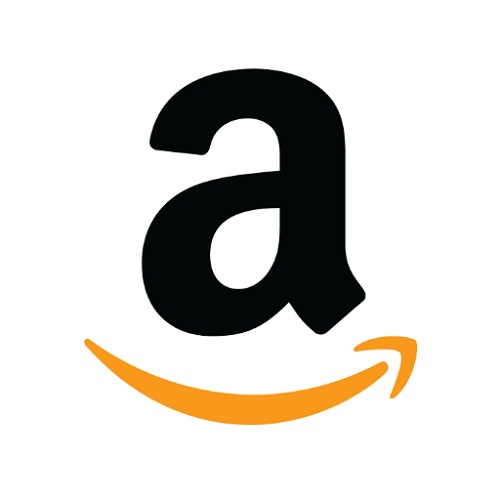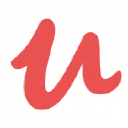I Faced This Problem Firsthand And Built A $15K MRR PDF-Generation API Tool
Hello! Who are you and what business did you start?🔗
Hi, I’m Jacky Tan, I'm the founder of CraftMyPDF.com and APITemplate.io. We offer API-based products which allow businesses to generate PDF documents and images from reusable templates.
Our flagship products are APITemplate and CraftMyPDF, both offer similar services: PDF generation and image generation API. In addition, our services integrate with no-code/low-code platforms that enable businesses to automate content generation for their business workflows.


The primary difference is that CraftMyPDF offers an advanced drag-and-drop editor and support expressions. It also allows third-party to embed our template editor right into their web applications. While APITemplate.io offers HTML to PDF conversions which are more technical and requires some knowledge of HTML and CSS.
Even though they resemble each other, both products target different segments of the market. CraftMyPDF is for citizen developers and it requires less technical skills, just simply drag-and-drop to create PDF documents.
It all started with a simple idea 2 years ago: to create a better way to create PDFs and it has to integrate with no-code tools such as Zapier and Make(ex Integromat).
Our flagship product, APITemplate, was born out of this idea, and 3 months ago we launched it to the world. Since then, we've continued to refine and improve our product, and 9 months ago we launched our newest product, CraftMyPDF.
We're currently doing USD 15,000 in monthly recurring revenue (MRR) for both products combined and have generated more than 2 million PDF documents and images for companies thus far over the past 2 years.
What's your backstory and how did you come up with the idea?🔗
As a maker at heart, I've always been drawn to startups and this is my fourth venture in building one from the ground up.
In my mid-twenties, I joined forces with my former coworkers in my homeland of Malaysia to build a web-based collaboration platform. Although the startup was not a success, I gained invaluable insight from the venture.
I wasn't sure what to do, so I took on a software project in Brunei. I worked there for 3 years, setting up a software company. I ultimately decided Brunei wasn't the right place for me, so I sold the business to a local partner and moved to Singapore. I worked as a salaryman for a short period, but entrepreneurship has always been my passion.
After deciding to quit my job, I joined a robotics startup I had previously invested in and became the R&D director. At one point, we hired 15 engineers, but despite receiving an investment, our expenses were too high and our funds were exhausted rapidly.
Thus far, my experience with startups has been mainly as a technical founder, and I have learned a lot from it.
While searching for the next idea, I incorporated a company just to focus on managed cloud services(AWS), Robotic Process Automation(RPA), and IT consulting. I quickly concluded that doing consulting was not long-term viable, and that I was not adept at shifting between different projects.
My goal was to gradually move towards a product-based company. This could allow me to focus on developing our products, rather than spending our precious time and resources on consulting projects.
We launched two micro SaaS products during the pandemic. The Covid pandemic has been a period of great challenge for businesses.
Many companies during the pandemic have been forced to re-evaluate their budgets and staffing levels to cope with the shortage of manpower caused by quarantine measures. To cope with these issues, companies turned to automation and digitization.
I took on some freelance work that required generating PDFs during the pandemic. While there were various online services available for this task, I found that none of them offered a user-friendly template editor. As a result, I decided to develop my PDF generation services with a template editor.
Our services help businesses to generate PDF documents, it was part of the digitization trend and therefore it helped us to grow.
Take us through the process of building the first version of your product.🔗
When I was looking for product ideas, I set some key guidelines before starting to ensure its success.
I decided that the product I’m going to build should:
- Only do one thing and not try to be an “all-in-one” solution
- Be able to be built in 3 months
- Target B2B market
- Subscription-based
These rules served as a guide for me to find potential ideas.
The next thing is to figure out exactly what product and market I want to pursue.
I have a mind map and also a long list of potential SaaS/business ideas. I was able to narrow down the market and identify which statement has the most potential. I eventually landed on the idea to develop an API-based product - PDF generation API.
Due to my technical background, developing an API-based product is the perfect fit for me as the founder.
I purchased a SaaS boilerplate at $300 to keep the development timeline within 3 months. The SaaS boilerplate included modules like user management, payment integration, and libraries.
This allowed me to focus on only the core features of my product.
It took me a week or two to build the core features of APITemplate.io which only offered PDF generation. After realizing that the same technology could be used for image generation, we added an image generation API and an image template editor.
For the next three months, we focused on integrating the modules with third-party services like Stripe and deploying them to AWS. The initial version of APITemplate.io was not perfect, however, the first few customers were willing to give us enough feedback to help us to iterate fast.
Validate your idea as soon as possible, but don't wait until your product is perfect because it never will be, ship your product, gather feedback, and iterate.
Describe the process of launching the business.🔗
Once our product was ready, it took me around 2 weeks to set up a WordPress website and put up a pricing page. We wanted to get the word out, so we posted the product on a few websites and app directories to get backlinks and increase visibility.
The screenshot below is the initial version of our website, featuring a logo that differs from the current one. We had to redesign the logo after receiving a complaint from a customer who thought our brand was "PITemplate" due to the missing "A".

We didn't launch the products immediately when they were ready. Instead, we took an iterative approach, launching small features based on the requirements of our customers, and refining them as we went along. By taking this approach, we were able to get feedback from our customers and make changes to the products based on that feedback.
The products were officially launched on ProductHunt a few months later and asked people to upvote our product. We wanted to create more exposure and increase traffic, so we continued to create SEO blog posts. Initially, we didn’t see any traffic in the first 3-6 months and had to work on our SEO.
The biggest lesson we learned was not to worry too much about how perfect is the product in the beginning. We were able to iterate and make changes quickly which helped us learn what features were most important to our users. By the end, we had a product that was much better than our original version.
Both of the projects were self-funded, we did most of the development ourselves and also worked with freelancers, thus making the running costs minimal. We always looked for ways to keep our costs minimal and get the products out fast before the idea was validated.
Since launch, what has worked to attract and retain customers?🔗
First and foremost, SEO has been the main source of traffic for our services. However, I had no prior experience with SEO and it took me a while to acquire the necessary skills through online resources such as articles on the Internet and also Udemy.
It has been two years since we launched our products, and both products combined have generated 15K in monthly recurring revenue.
By creating blog posts regularly on a monthly basis, we can boost our visibility on search engine results pages, making it easier for customers to find our services. We have also been investing in other SEO strategies, such as building backlinks, guest posting, and optimizing existing blog posts.

We initially used Google Ads and ran paid ads for a month. However, the results were unsatisfactory and the sign-ups were not increased. We quickly realized that Google Ads was not the best way to attract new customers(at least for us, or we were not doing it right), so we decided to focus more on SEO.
Our churn rate has been approximately 5% over the past 6 months. After speaking with some of the customers who have churned, it seems that most of them did so because they no longer needed the service, or their requirements changed. There is little we can do about this, unfortunately.
We regularly collect feedback from our customers and consider their advice. By listening to our customers, we can understand their needs and requirements for our products, and make the necessary changes to serve them better.
Finally, we have gone through a few iterations to improve the UI/UX. In the beginning, we had feedback from a customer telling us how bad the UI/UX was.

By engaging with customers and making several UI/UX design changes, we were able to enhance the user experience and foster customer loyalty. This has been invaluable in acquiring new customers and keeping existing ones.
How are you doing today and what does the future look like?🔗
It has been two years since we launched our products, and both products combined have generated 15K in monthly recurring revenue.
Our MRR performance over the last two years is as follows:

Our primary goal now is to explore new and existing avenues to promote our products. The main source of traffic for both products is SEO, but we want to ensure that our products reach as many people as possible, whether that be through traditional or more creative methods.
Furthermore, we anticipate that in the near future, we will be recruiting additional personnel to form a team, to accelerate the development, provide support, and maintenance of our products.
Through starting the business, have you learned anything particularly helpful or advantageous?🔗
One of the most valuable lessons I’ve learned is the importance of marketing and I learned this the hard way.
As a technical founder, my priorities were to ship the products and I didn't prioritize marketing early on. As a result, my businesses struggled to gain traction.
I've since learned that marketing is just as important as product development, and I now make sure to give both areas equal attention.
I also learned that you do not need to wait for the product to be flawless before launching it. The wiser approach is to release it as soon as possible and then make changes based on customer feedback and the customer feedback can be used to refine the product, ultimately making it more successful in the future.
What platform/tools do you use for your business?🔗
- AWS for hosting
- Make.com for process automation
- Notion to organize tasks, planning etc
- MindMeister for mind mapping
- Lucidchart
- ChartMogul
What have been the most influential books, podcasts, or other resources?🔗
- The ONE Thing by Gary Keller
- The Lean Startup Book by Eric Ries
- Awaken the Giant Within by Tony Robbins
- Micro Conf
- There is a section “Resources” on my website I gathered the resources that I find useful

Advice for other entrepreneurs who want to get started or are just starting out?🔗
Anyone who's ever attempted to build a startup knows it's not for the faint of heart. It takes a tremendous amount of hard work, dedication, and hustle. And even then, there is no guarantee of success.
There are no set rules for entrepreneurship, but the following have been helpful to me:
- Financing your startup can be one of the most stressful aspects of the journey. Make sure you have a solid plan in place before quitting your day job. And be prepared to sacrifice a lot in the beginning, in terms of time, money, and energy.
- Validate your idea as soon as possible, but don't wait until your product is perfect because it never will be, ship your product, gather feedback, and iterate. This way, you can make sure you're on the right track, and not wasting your time building something nobody wants.
- Marketing is just as important as product development, make sure you give them equal attention. However, if you don't feel confident in your marketing skills, there's no shame in enlisting the help of a co-founder or hiring someone to take on the responsibility.
- It's important to remember that stress is a normal part of the process and to try not to let it overwhelm you. Taking some time for yourself to relax and recharge will help you stay focused and motivated as you work towards making your dream a reality.
Building a startup is an incredible accomplishment, and the journey is often as rewarding as the destination. So if you have the right attitude and are prepared to deal with failure, you stand a much better chance of succeeding.
Are you looking to hire for certain positions right now?🔗
We are looking for a part-time technical content writer, The ideal candidate should be:
- Able to explain complex concepts in an easy-to-understand manner
- Have a strong understanding of SEO and how to optimize content for search engines.
- Familiar with no-code platforms such as Zapier, Make.com
Where can we go to learn more?🔗
You can also email me at hello@bktan.co.
If you have any questions or comments, drop a comment below!

Download the report and join our email newsletter packed with business ideas and money-making opportunities, backed by real-life case studies.

Download the report and join our email newsletter packed with business ideas and money-making opportunities, backed by real-life case studies.

Download the report and join our email newsletter packed with business ideas and money-making opportunities, backed by real-life case studies.

Download the report and join our email newsletter packed with business ideas and money-making opportunities, backed by real-life case studies.

Download the report and join our email newsletter packed with business ideas and money-making opportunities, backed by real-life case studies.

Download the report and join our email newsletter packed with business ideas and money-making opportunities, backed by real-life case studies.

Download the report and join our email newsletter packed with business ideas and money-making opportunities, backed by real-life case studies.

Download the report and join our email newsletter packed with business ideas and money-making opportunities, backed by real-life case studies.

























